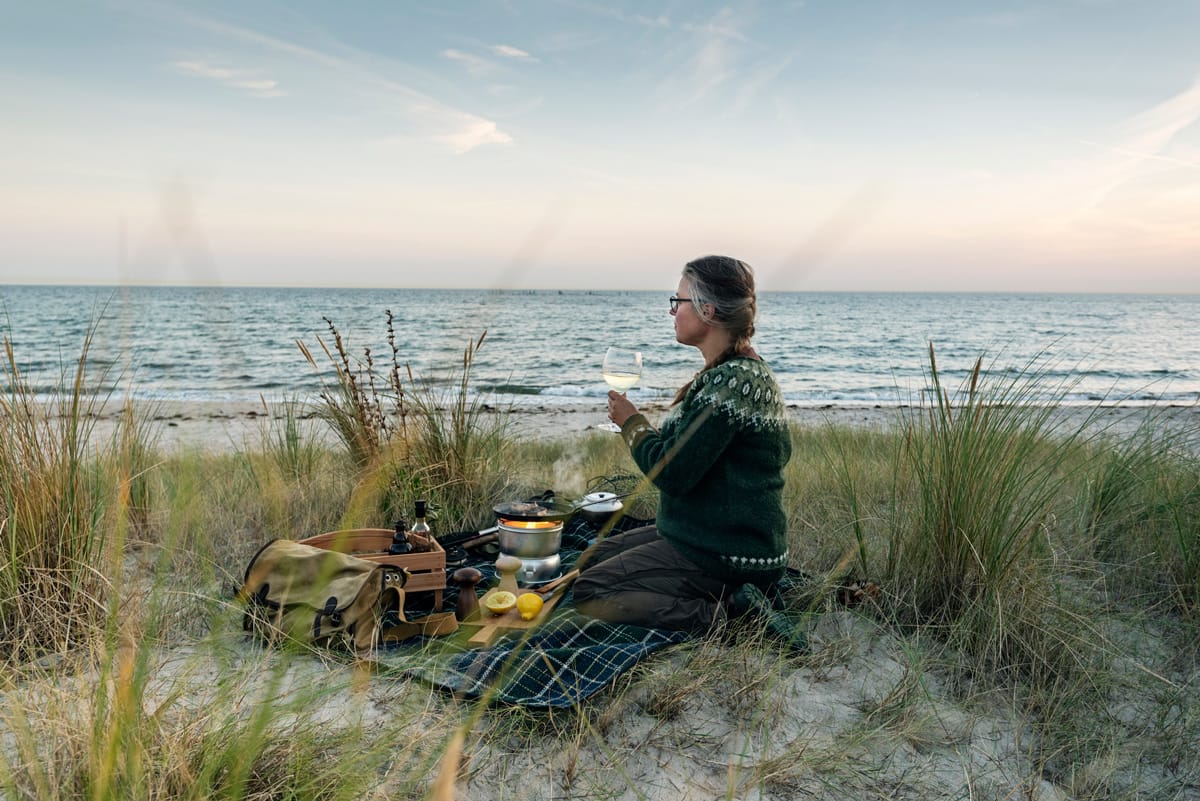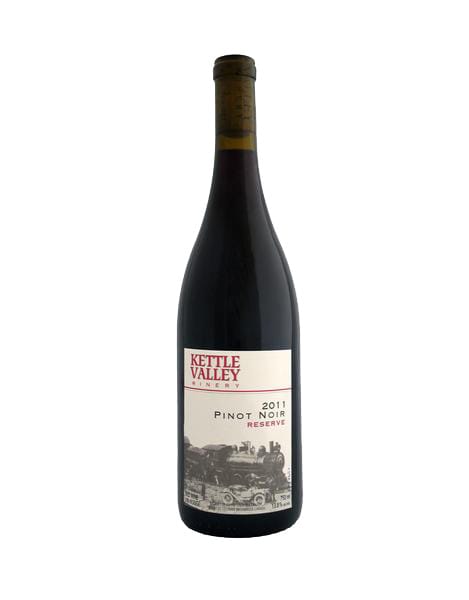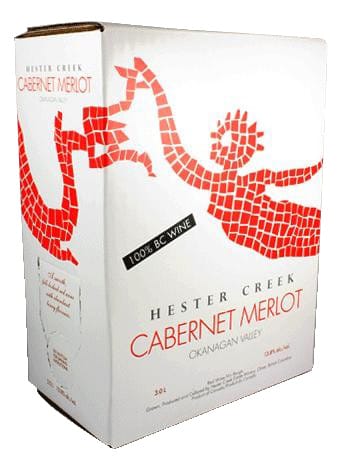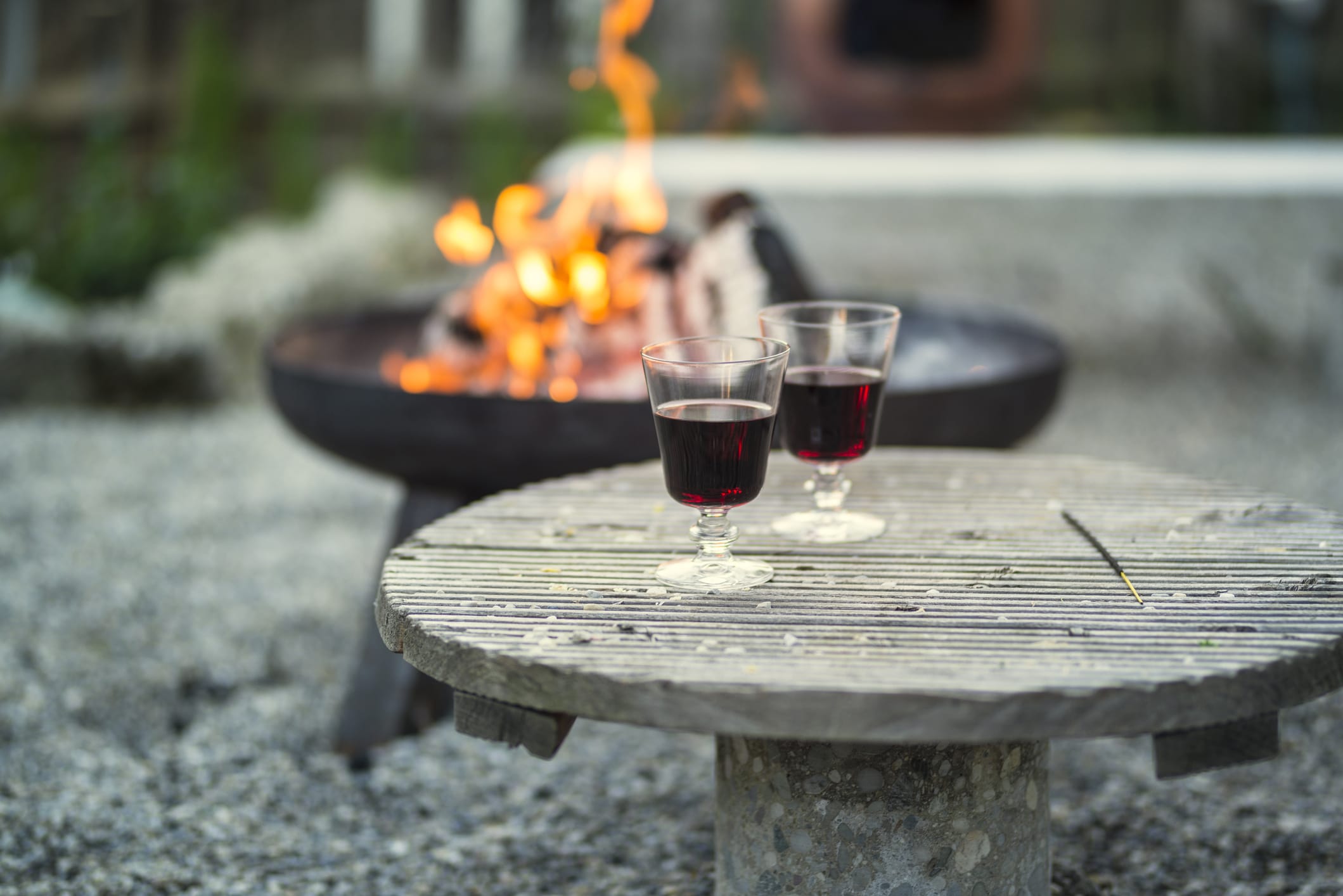
Wine Culture Magazine

Wine makes moments spent in nature even more beautiful. The key is to make it portable (and of course to follow local rules). istockphoto.com/ClarkandCompany photo
Afew summers ago, a couple of adventurers wandered into the wine shop where I worked. They wanted to take wine on their kayaking adventure, but this kind of trip has restrictions. Space is limited, waste can’t be left behind and everything has to be waterproof. We discussed the benefits of cans, which can be easily chilled, opened and crushed in every sense of the word. (Compact them for recycling on your return.) We considered screw-cap bottles, which were a bit heavier and larger, but still easy to open, close and recycle. The winner was the undervalued bag-in-box. Here’s why you might choose each one.
 What could be more satisfying than bubbles in the back country? Canned bubbly like Bling, a sparkling wine made by The View in Kelowna, fits nicely into a pack ($17.99 for a six-pack of white or rosé). It’s flavourful and aromatic, with a hint of sweetness—lovely on its own, or it pairs well with crackers and cheese. If your tastes are more upscale, consider half-bottles of Champagne, like Veuve Cliquot, the golden-labelled queen ($42.99 for 375 mL). Nothing goes better with fresh-shucked beach oysters! No flutes? No problem. Stemless wine glasses are totally sensible here. Check out govino.com for recyclable, reusable, plastic stemless glassware, including flutes.
What could be more satisfying than bubbles in the back country? Canned bubbly like Bling, a sparkling wine made by The View in Kelowna, fits nicely into a pack ($17.99 for a six-pack of white or rosé). It’s flavourful and aromatic, with a hint of sweetness—lovely on its own, or it pairs well with crackers and cheese. If your tastes are more upscale, consider half-bottles of Champagne, like Veuve Cliquot, the golden-labelled queen ($42.99 for 375 mL). Nothing goes better with fresh-shucked beach oysters! No flutes? No problem. Stemless wine glasses are totally sensible here. Check out govino.com for recyclable, reusable, plastic stemless glassware, including flutes.
 If you are a traditionalist who prefers wine under cork, don’t hesitate to pack it. A double-hinged somm-style corkscrew ($16.95 at Crate & Barrel) is a multi-purpose tool, with a capsule-cutting blade that will be handy for twine or twigs, as well. (Your actual utility knife or multi-purpose tool probably has a basic corkscrew, too.) Half-bottles are easy to pack and all you really need for a picnic à deux. Among the top B.C. choices for cork closures, Naramata Bench’s Kettle Valley Winery gets top marks for its aged, savoury Pinot Noir Reserve ($22 for 375 mL), perfect with cold roast chicken and potato salad. If you like to travel light, then a screw-cap bottle is your thing. Try blends from Le Vieux Pin like Petit Blanc or Petit Rouge. Both styles deliver great quality ($15 for 375 mL) and are great on their own or with charcuterie and spreadable cheeses.
If you are a traditionalist who prefers wine under cork, don’t hesitate to pack it. A double-hinged somm-style corkscrew ($16.95 at Crate & Barrel) is a multi-purpose tool, with a capsule-cutting blade that will be handy for twine or twigs, as well. (Your actual utility knife or multi-purpose tool probably has a basic corkscrew, too.) Half-bottles are easy to pack and all you really need for a picnic à deux. Among the top B.C. choices for cork closures, Naramata Bench’s Kettle Valley Winery gets top marks for its aged, savoury Pinot Noir Reserve ($22 for 375 mL), perfect with cold roast chicken and potato salad. If you like to travel light, then a screw-cap bottle is your thing. Try blends from Le Vieux Pin like Petit Blanc or Petit Rouge. Both styles deliver great quality ($15 for 375 mL) and are great on their own or with charcuterie and spreadable cheeses.
 Is your adventure longer than a few days? A three-litre bag-in-box format is the equivalent of four bottles, or about 20 glasses of wine. For paddling or boating trips, the genius hack is to strip away the cardboard so you can chill the wine by tying the bag onto a rope and dragging it in the water behind you. This way the wine stays cool, the weight is distributed and the wine remains fresh over the duration of the trip because its vacuum-seal inner pouch doesn’t let air, water or anything else in. This format is also popular with the RV crowd, who know that it’s the best bang-for-the-buck quality wine. The three-litre bag-in-box of Hester Creek Pinot Gris and/or Cabernet Merlot ($56) works out to less than $15 a bottle.
Is your adventure longer than a few days? A three-litre bag-in-box format is the equivalent of four bottles, or about 20 glasses of wine. For paddling or boating trips, the genius hack is to strip away the cardboard so you can chill the wine by tying the bag onto a rope and dragging it in the water behind you. This way the wine stays cool, the weight is distributed and the wine remains fresh over the duration of the trip because its vacuum-seal inner pouch doesn’t let air, water or anything else in. This format is also popular with the RV crowd, who know that it’s the best bang-for-the-buck quality wine. The three-litre bag-in-box of Hester Creek Pinot Gris and/or Cabernet Merlot ($56) works out to less than $15 a bottle.

istockphoto.com/altmodern photo
Finally: You always should drink responsibly, which means noting the rules for alcohol consumption wherever you picnic or camp. But whether it’s five days in a kayak, a weekend tenting in the back country or an entire summer cruising in an RV, there is a wine packaged smartly, just for you.

Barb Wild is the Good Wine Gal, and her goal is to help people discover what they like—without snobbery. Follow Good Wine Gal’s life of wine study, wine tastings and wine travel at goodwinegal.ca.

Barb Wild is the Good Wine Gal, and her goal is to help people discover what they like—without snobbery. Follow Good Wine Gal’s life of wine study, wine tastings and wine travel at goodwinegal.ca.
Copyright © 2025 - All Rights Reserved Vitis Magazine